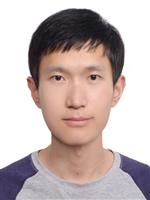导师简介
个人基本情况及简历:
马稳龙,男,博士,研究员,博士生导师。
2010年本科毕业于北京科技大学应用物理系, 2015年在中国科学院半导体研究所获得博士学位,师从李树深院士; 2015年2020年先后在香港中文大学、耶鲁大学和芝加哥大学做博士后研究,合作导师分别为刘仁保教授和Liang Jiang教授;2020年通过中国科学院半导体研究所“卓越青年学者”引才计划引进,入选国家高层次青年人才计划。
主要研究领域方向:
从事量子信息科学与技术的基础理论研究,具体研究方向包括:
1. 量子耗散和退相干理论;
2. 量子控制与测量理论;
3. 量子纠错与可容错操控理论;
4. 量子精密测量理论和量子算法。
取得的重要科研成果及所获奖励:
长期从事固态量子信息的理论研究,研究兴趣包括量子耗散退相干、量子控制和测量、量子纠错和可容错操控、量子精密测量和量子算法等,取得了一系列理论创新成果,并吸引多个国际权威实验组的跟踪和合作研究。已发表论文30篇(其中以第一或者通讯作者发表22篇),包括Nature Physics 2篇,Nature Communications 2篇,Physical Review Letters 3篇,Reports on Progresses in Physics, Science Bulletin各1篇, Physical Review A/B/Applied/Research 17篇。 担任Nat. Commun., PRL/X/A/B/Appl/Res, PRX Quantum, CPL/B等期刊审稿人。代表研究成果包括:
(1) 揭示半导体自旋比特的退相干机制并提出了抑制自旋比特退相干的方法,相关理论发现被伦敦大学John Morton实验组在硅杂质系统中验证,并系统揭示了量子比特的相干性测量对量子环境的反馈作用,这为固态体系中的量子态保护和操控提供了有力支撑 [Phys. Rev. B 92, 161403(R) (2015); Nat. Commun. 5, 4822 (2014) ; Rep. Prog. Phys. 80, 016001 (2017); Phys. Rev. B 110, 024311 (2024)];
(2) 提出不依赖于路经的可容错量子操控理论,相关方案并被耶鲁大学Robert Schoelkopf实验组在超导系统中验证,并基于量子相位估计算法提出玻色纠错码的普适的错误探测理论,这为纠错量子计算的实现提供了创新方案 [Phys. Rev. Lett. 125, 110503 (2020); Nat. Phys. 16, 822 (2020); Sci. Bull. 2021, 66, 1789 (2021); Phys. Rev. Res. 4, 023102 (2022);Phys. Rev. A 111, 022406 (2025);Phys. Rev. Lett. 135, 140603 (2025)];
(3)系统发展连续量子信道理论并揭示开放量子系统中的新奇物理现象:(i)提出连续量子弱测量中的相变理论,并被中科院物理所的实验组在金刚石NV色心体系中验证;(ii) 提出利用连续广义测量模拟任意量子投影测量的理论方案;(iii) 发现离散量子信道动力学演化中的亚稳态现象,并应用于量子信息处理中的连续Ramsey测量 [Phys. Rev. A 98, 012117 (2018) ; Phys. Rev. Lett. 118, 150504 (2017); Phys. Rev. A 107, 012217 (2023); Phys. Rev. A 109, 042204 (2024); Nat. Commu. 16, 1918 (2025)]。
(4)发展利用半导体自旋比特进行量子精密测量的理论,并设计了一系列利用金刚石NV色心进行纳米尺度磁探测的理论方案,这促进了固态量子体系在量子精密测量中的应用[Phys. Rev. Appl. 6, 054012 (2016); Phys. Rev. Appl. 6, 024019 (2016); Phys. Rev. Appl. 5, 044016 (2016)];
联系方式(所内E-mail地址、办公电话):
Email: wenlongma@semi.ac.cn; 办公电话:010-82304049
在研/完成项目:
(1) 国家自然科学基金面上项目, 2026-2029,主持
(2) 国家自然科学基金面上项目, 2022-2025,主持
(3) 科技创新2030重大专项,2022-2026,骨干
(4) 中国科学院基础研究领域青年团队项目,2024-2028,骨干
代表性论文或著作(#第一作者,*通讯作者):
1.Jun-Xiang Zhang#, Yuan-De Jin#, Chu-Dan Qiu, Wen-Long Ma*, and Gang-Qin Liu*, Observation of metastability in open quantum dynamics of a solid-state system, Nature Communications 16, 1918 (2025).
2.Na Li, Yang Zhao*, Wen-Long Ma*, Z. D. Wang*, and Yan-Kui Bai*,Two-party entanglement distribution in XXZ spin chains with the exponential and power-law long-range interactions, Physical Review B 112, 134418 (2025).
3.Yuan-De Jin, Shi-Yu Zhang, Ulrik L. Andersen, and Wen-Long Ma*, General Approach to Error Detection of Bosonic Codes via Phase Estimation, Physical Review Letters 135, 140603 (2025).
4.Jun Zheng*, Wan-Yi Jiang, Wei Pei, Li Ma, Dan-Na Liu, Chun-Lei Li, and Wen-Long Ma*, All-armchair-edged Xenes and optically controlled enhancement-mode transistor, Physical Review Applied 24, 014058 (2025).
5.Yuan-De Jin, Shi-Yu Zhang, and Wen-Long Ma*, Channel-based framework for phase estimation of multiple eigenvalues, Physical Review A 111, 022406 (2025).
6.Lin-Lin Su, Jun Ren*, Wen-Long Ma*, Z. D. Wang*, and Yan-Kui Bai*, Diagnosing quantum phases using long-range two-site quantum resource behavior, Physical Review B 110, 104101 (2024).
7.Chu-Dan Qiu#, Yuan-De Jin#, Jun-Xiang Zhang, Gang-Qin Liu, and Wen-Long Ma*, How coherence measurements of a qubit steer its quantum environment, Physical Review B 110, 024311 (2024).
8.Yuan-De Jin# , Chu-Dan Qiu#, and Wen-Long Ma*, Theory of metastability in discrete-time open quantum dynamics, Physical Review A 109, 042204 (2024).
9.Wen-Long Ma*, Shu-Shen Li, and Ren-Bao Liu, Sequential generalized measurements: Asymptotics, typicality, and emergent projective measurements, Physical Review A 107, 012217 (2023).
10.Srivatsan Chakram , Kevin He, Akash V. Dixit, Andrew E. Oriani1, Ravi K. Naik , Nelson Leung, Hyeokshin Kwon, Wen-Long Ma, Liang Jiang and David I. Schuster*, Multimode Photon Blockade, Nature Physics 18, 879 (2022).
11.Wen-Long Ma*, Shu-Shen Li, and Liang Jiang, Algebraic structure of path-independent quantum control, Physical Review Research 4, 023102 (2022).
12.Wen-Long Ma, Shruti Puri, Robert J. Schoelkopf, Michel H. Devoret, S. M. Girvin, and Liang Jiang*, Quantum control of bosonic modes with superconducting circuits, Science Bulletin 66, 1789 (2021). (Invited Review)
13.Geng-Li Zhang, Wen-Long Ma, and Ren-Bao Liu*, Cluster correlation expansion for studying decoherence of clock transitions in spin baths, Physical Review B 102, 245303 (2020).
14.Wen-Long Ma, Mengzhen Zhang, Yat Wong, Kyungjoo Noh, Serge Rosenblum, Philip Reinhold, Robert J Schoelkopf, and Liang Jiang, Path-Independent Quantum Gates with Noisy Ancilla, Physical Review Letters 125, 110503 (2020).
15.Philip Reinhold#*, Serge Rosenblum#*, Wen-Long Ma, Luigi Frunzio, Liang Jiang, and Robert J. Schoelkopf*, Error-corrected gates on an encoded qubit, Nature Physics 16, 822 (2020).
16.Wen-Long Ma, Ping Wang, Weng-Hang Leong, and Ren-Bao Liu*, Phase transitions in sequential weak measurements, Physical Review A 98, 012117(2018).
17.Wen Yang, Wen-Long Ma, and Ren-Bao Liu*, Quantum many-body theory for electron spin decoherence in nanoscale nuclear spin baths, Reports on Progress in Physics 80, 016001 (2017). (Invited Review)
18.Gang-Qin Liu, Jian Xing, Wen-Long Ma, Ping Wang, Chang-Hao Li, Hoi Chun Po, Yu-Ran Zhang, Heng Fan, Ren-Bao Liu, Xin-Yu Pan*, Single-shot readout of a nuclear spin weakly coupled to a nitrogen-vacancy center at room temperature, Physical Review Letters 118, 150504 (2017).
19.Wen-Long Ma and Ren-Bao Liu*, Proposal for Quantum sensing based on two-dimensional dynamical decoupling: NMR correlation spectroscopy of single molecules, Physical Review Applied 6, 054012(2016).
20.Wen-Long Ma and Ren-Bao Liu*, Angstrom-Resolution Magnetic Resonance Imaging of Single Molecules via Wave-Function Fingerprints of Nuclear Spins, Physical Review Applied 6, 024019 (2016).
21.Wen-Long Ma, Shu-Shen Li, Geng-Yu Cao, and Ren-Bao Liu*, Atomic-scale Positioning of Single Spins via Multiple Nitrogen-Vacancy Centers, Physical Review Applied 5, 044016 (2016).
22.Wen-Long Ma#, Gary Wolfowicz#, Shu-Shen Li, John J. L. Morton*, and Ren-Bao Liu*, Classical nature of nuclear spin noise near clock transitions of Bi donors in silicon, Physical Review B 92, 161403(R) (2015). (Rapid Communications and Editors’ Suggestions)
23.C. Grezes, B.Julsgaard, Y Kubo, W. L. Ma, M. Stern, A.Bienfait, K. Nakamura, J.Isoya, S. Onoda, T. Ohshima, V. Jacques, D.Vion, D.Esteve, R. B. Liu, K. Mølmer, and P. Bertet, Storage and retrieval of microwave fields at the single-photon level in a spin ensemble, Physical Review A 92, 020301(R) (2015). (Rapid Communications)
24.Wen-Long Ma#, Gary Wolfowicz#, Nan Zhao, Shu-Shen Li, John J.L. Morton*, and Ren-Bao Liu*, Uncovering many-body correlations in nanoscale nuclear spin baths by central spin decoherence, Nature Communications 5, 4822 (2014).
25.Wen-Long Ma and Shu-Shen Li, Electric-field-induced spin depolarization in grapheme quantum dots, Physical Review B 86, 045449 (2012).
26.Wen-Long Ma* and Shu-Shen Li, Electrically controllable energy gaps in graphene quantum dots, Applied Physics Letters 100, 163109 (2012).

